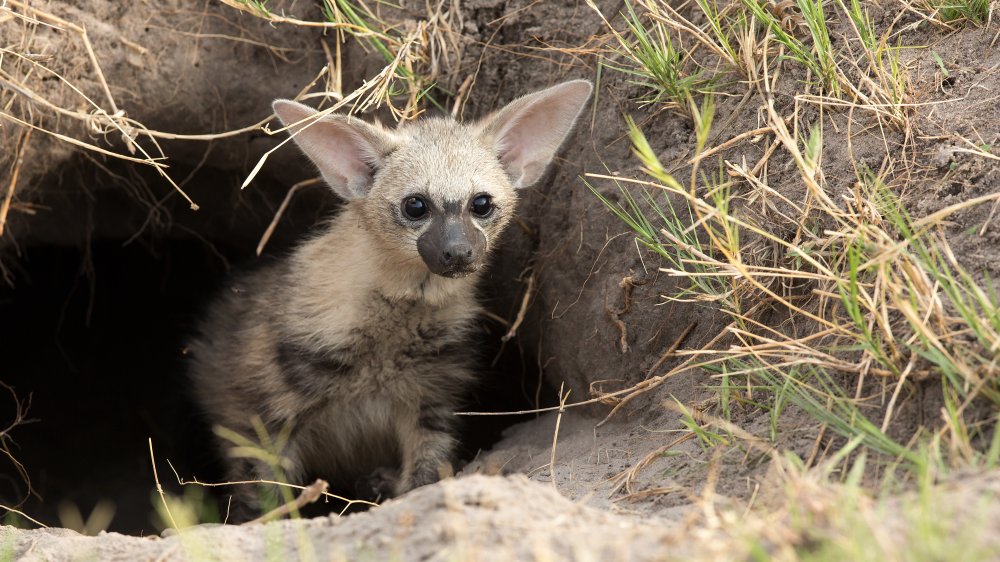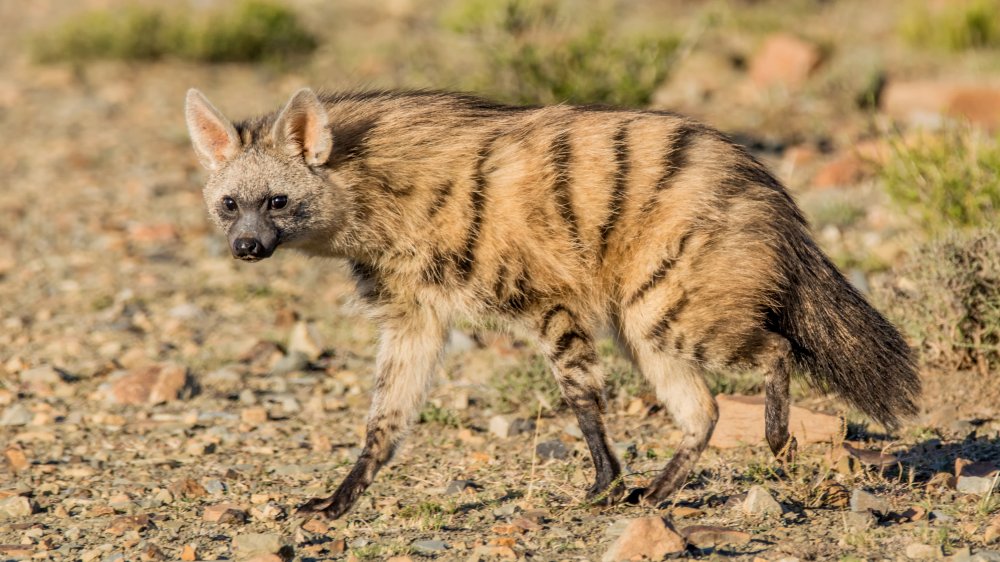Everything You Ever Wanted To Know About The Aardwolf
The aardwolf, contrary to what the name might imply, isn't some hybrid abomination blend of wolf and aardvark. So, please, don't start with your "what do you get when you cross" jokes. This creature has a unique appearance. Its neck is longer than most predators of its size — roughly the same size as a fox. And, it's twice as cheek-pinching adorable. Officially, we'd put its "cuteness" somewhere right below that of a baby panda. Yeah, that's saying something.
"Aardwolf" means "Earth wolf," says Britannica. The name might come from the creature's yellowish-tan fur that kind of resembles the dry dirt of its homelands — that being east and south Africa — but it's more likely from the animal making its den in previously abandoned burrows. The aardwolf has contrasting dark stripes similar to those of a tiger and a couple of odd anatomical features, like five toes on each of its front feet and a long, sticky tongue it uses to catch its prey.
Unfortunately, you're not likely to encounter one of the little guys. They're extremely rare. On a sad note, some farmers end up mistakenly killing them, assuming they attack livestock. They don't, of course. It's just a bad rap. They have an alibi.
The aardwolf isn't really a wolf
That's right, it's a misnomer. The name has "wolf" in it, but the aardwolf isn't a wolf. (Neither Virginia Woolf nor Wolf Blitzer qualify, either.) And, just like the aforementioned author and the TV host, the aardwolf isn't even a canine. This creature is part of the same family as the hyena (also not related to wolves), though some scientists place it in its own family. It even resembles a hyena, if the hyena were small and adorable instead of a cackling murderer. Unlike their larger laughing cousins, the aardwolf hunts at night and primarily lives on insects, mostly termites, says Britannica.
Both hyenas and aardwolves have a line of firm hairs on their backs that make them look like they're rocking the punk mohawk look. On the hyena, it's probably meant for intimidation. On the aardwolf, it only adds to the cuteness. That's not saying the aardwolf can't defend itself. The creature has extremely sharp canine teeth and won't think twice about unsheathing them in self-defense. At the same time time the aardwolf is probably secreting a strong scent from its anal glands — a powerful combat strategy. It has the same longer forelegs as the hyena and powerful shoulders, but the aardvark doesn't really like to run, which is probably why it lazily eats bugs instead of hunting down miniature giraffes. Also, there aren't any miniature giraffes. Poor aardwolf.

